Shang-Hua Yang
Department of Electrical Engineering, National Tsing Hua University
Breaking the Limitations with Sparse Inputs by Variational Frameworks (BLIss) in Terahertz Super-Resolution 3D Reconstruction
Mar 27, 2024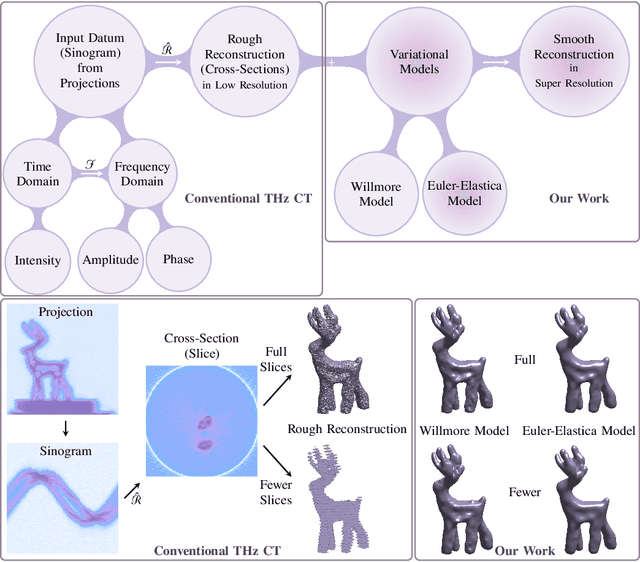
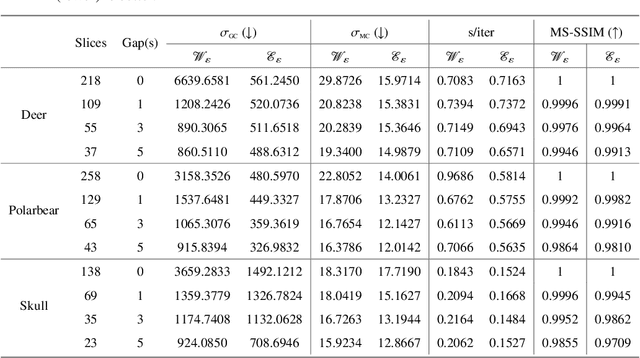
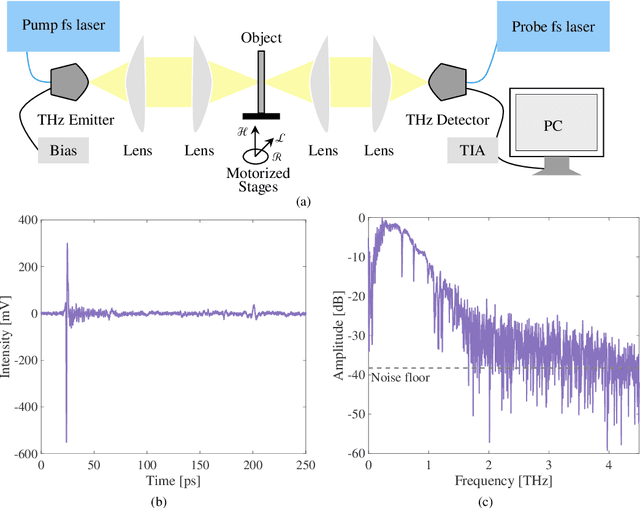

Abstract:Data acquisition, image processing, and image quality are the long-lasting issues for terahertz (THz) 3D reconstructed imaging. Existing methods are primarily designed for 2D scenarios, given the challenges associated with obtaining super-resolution (SR) data and the absence of an efficient SR 3D reconstruction framework in conventional computed tomography (CT). Here, we demonstrate BLIss, a new approach for THz SR 3D reconstruction with sparse 2D data input. BLIss seamlessly integrates conventional CT techniques and variational framework with the core of the adapted Euler-Elastica-based model. The quantitative 3D image evaluation metrics, including the standard deviation of Gaussian, mean curvatures, and the multi-scale structural similarity index measure (MS-SSIM), validate the superior smoothness and fidelity achieved with our variational framework approach compared with conventional THz CT modal. Beyond its contributions to advancing THz SR 3D reconstruction, BLIss demonstrates potential applicability in other imaging modalities, such as X-ray and MRI. This suggests extensive impacts on the broader field of imaging applications.
* 15 pages, 7 figures. Supplemental Document: https://doi.org/10.6084/m9.figshare.24455206
Super-Resolution Surface Reconstruction from Few Low-Resolution Slices
Sep 12, 2023Abstract:In many imaging applications where segmented features (e.g. blood vessels) are further used for other numerical simulations (e.g. finite element analysis), the obtained surfaces do not have fine resolutions suitable for the task. Increasing the resolution of such surfaces becomes crucial. This paper proposes a new variational model for solving this problem, based on an Euler-Elastica-based regulariser. Further, we propose and implement two numerical algorithms for solving the model, a projected gradient descent method and the alternating direction method of multipliers. Numerical experiments using real-life examples (including two from outputs of another variational model) have been illustrated for effectiveness. The advantages of the new model are shown through quantitative comparisons by the standard deviation of Gaussian curvatures and mean curvatures from the viewpoint of discrete geometry.
* 33 pages, 25 figures
Making the Invisible Visible: Toward High-Quality Terahertz Tomographic Imaging via Physics-Guided Restoration
Apr 28, 2023Abstract:Terahertz (THz) tomographic imaging has recently attracted significant attention thanks to its non-invasive, non-destructive, non-ionizing, material-classification, and ultra-fast nature for object exploration and inspection. However, its strong water absorption nature and low noise tolerance lead to undesired blurs and distortions of reconstructed THz images. The diffraction-limited THz signals highly constrain the performances of existing restoration methods. To address the problem, we propose a novel multi-view Subspace-Attention-guided Restoration Network (SARNet) that fuses multi-view and multi-spectral features of THz images for effective image restoration and 3D tomographic reconstruction. To this end, SARNet uses multi-scale branches to extract intra-view spatio-spectral amplitude and phase features and fuse them via shared subspace projection and self-attention guidance. We then perform inter-view fusion to further improve the restoration of individual views by leveraging the redundancies between neighboring views. Here, we experimentally construct a THz time-domain spectroscopy (THz-TDS) system covering a broad frequency range from 0.1 THz to 4 THz for building up a temporal/spectral/spatial/ material THz database of hidden 3D objects. Complementary to a quantitative evaluation, we demonstrate the effectiveness of our SARNet model on 3D THz tomographic reconstruction applications.
Terahertz Spatio-Temporal Deep Learning Computed Tomography
May 03, 2022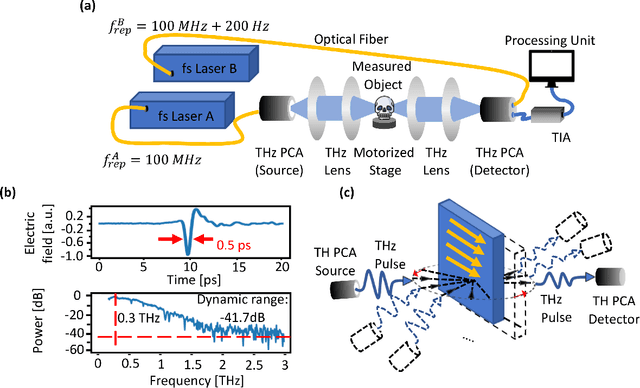
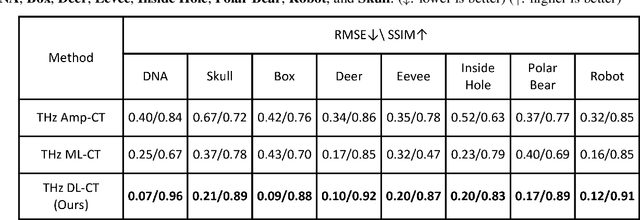
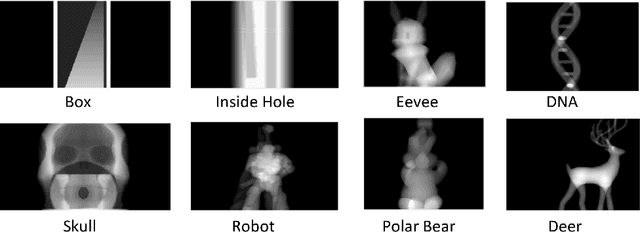
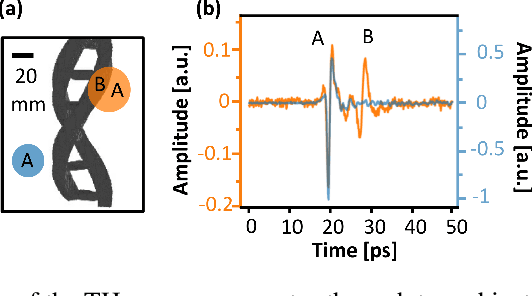
Abstract:Terahertz computed tomography (THz CT) has drawn significant attention because of its unique capability to bring multi-dimensional object information from invisible to visible. However, current physics-model-based THz CT modalities present low data use efficiency on time-resolved THz signals and low model fusion extensibility, limiting their application fields' practical use. In this paper, we propose a supervised THz deep learning computed tomography (THz DL-CT) framework based on time-domain information. THz DL-CT restores superior THz tomographic images of 3D objects by extracting features from spatio-temporal THz signals without any prior material information. Compared with conventional and machine learning based methods, THz DL-CT delivers at least 50.2%, and 52.6% superior in root mean square error (RMSE) and structural similarity index (SSIM), respectively. Additionally, we have experimentally demonstrated that the pretrained THz DL-CT model can generalize to reconstruct multi-material systems with no prerequisite information. THz CT through the DL data fusion approach provides a new pathway for non-invasive functional imaging in object investigation.
Physics-guided Terahertz Computational Imaging
Apr 30, 2022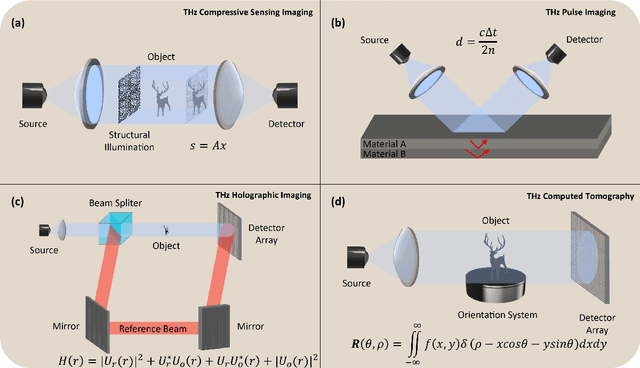
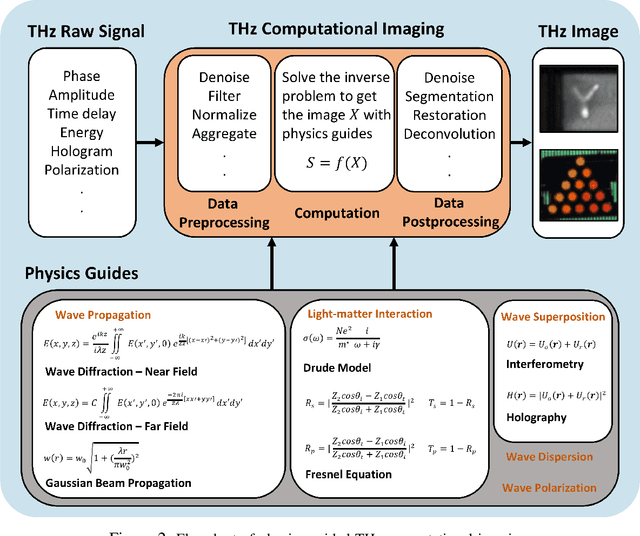
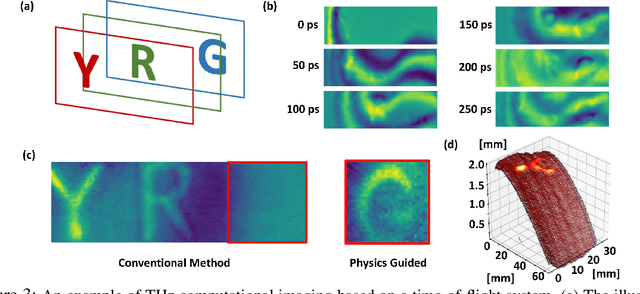
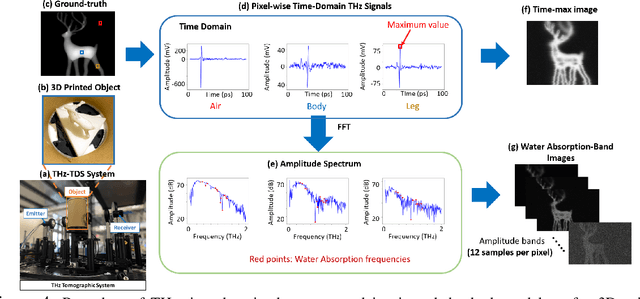
Abstract:Visualizing information inside objects is an ever-lasting need to bridge the world from physics, chemistry, biology to computation. Among all tomographic techniques, terahertz (THz) computational imaging has demonstrated its unique sensing features to digitalize multi-dimensional object information in a non-destructive, non-ionizing, and non-invasive way. Applying modern signal processing and physics-guided modalities, THz computational imaging systems are now launched in various application fields in industrial inspection, security screening, chemical inspection and non-destructive evaluation. In this article, we overview recent advances in THz computational imaging modalities in the aspects of system configuration, wave propagation and interaction models, physics-guided algorithm for digitalizing interior information of imaged objects. Several image restoration and reconstruction issues based on multi-dimensional THz signals are further discussed, which provides a crosslink between material digitalization, functional property extraction, and multi-dimensional imager utilization from a signal processing perspective.
HYPERION: Hyperspectral Penetrating-type Ellipsoidal Reconstruction for Terahertz Blind Source Separation
Sep 30, 2021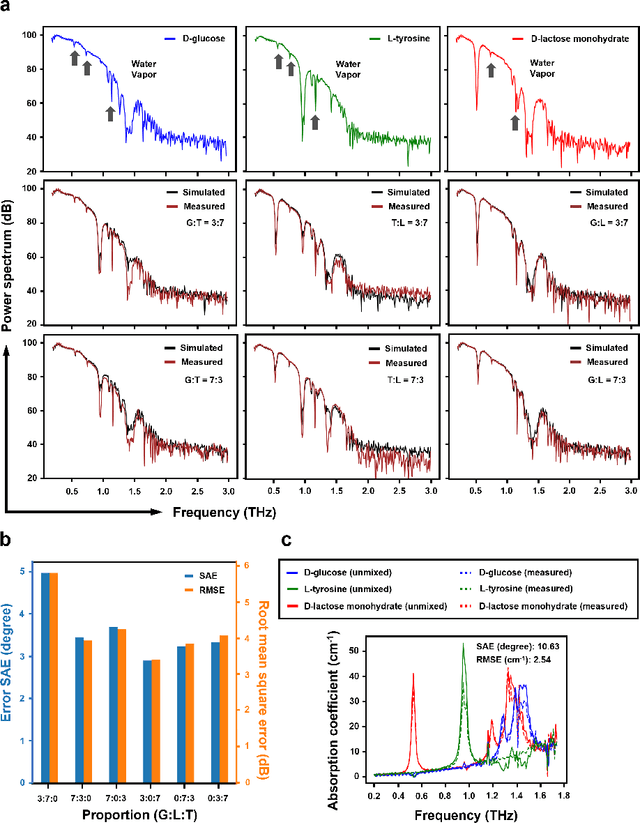
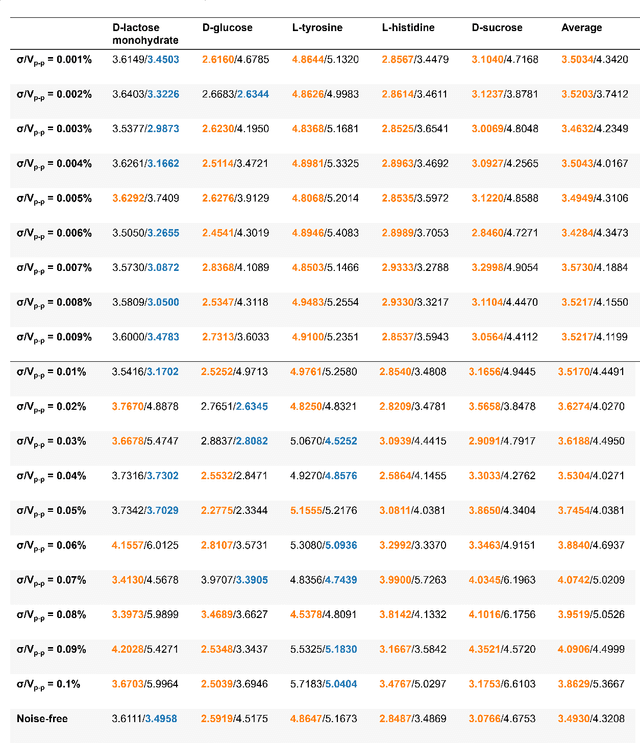
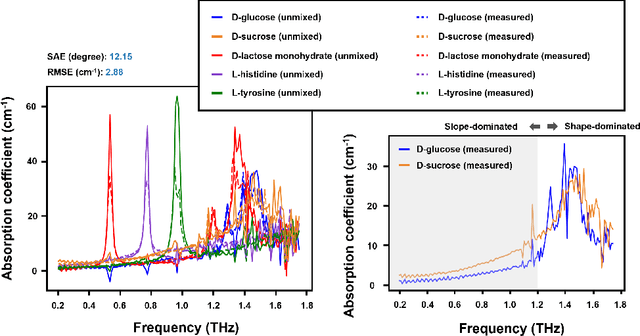
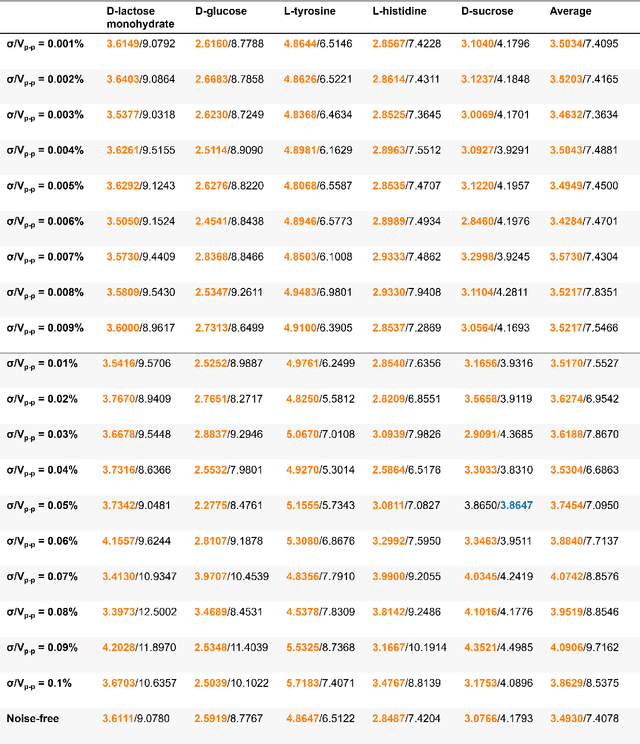
Abstract:Terahertz (THz) technology has been a great candidate for applications, including pharmaceutic analysis, chemical identification, and remote sensing and imaging due to its non-invasive and non-destructive properties. Among those applications, penetrating-type hyperspectral THz signals, which provide crucial material information, normally involve a noisy, complex mixture system. Additionally, the measured THz signals could be ill-conditioned due to the overlap of the material absorption peak in the measured bands. To address those issues, we consider penetrating-type signal mixtures and aim to develop a blind hyperspectral unmixing (HU) method without requiring any information from a prebuilt database. The proposed HYperspectral Penetrating-type Ellipsoidal ReconstructION (HYPERION) algorithm is unsupervised, not relying on collecting extensive data or sophisticated model training. Instead, it is developed based on elegant ellipsoidal geometry under a very mild requirement on data purity, whose excellent efficacy is experimentally demonstrated.
Seeing through a Black Box: Toward High-Quality Terahertz TomographicImaging via Multi-Scale Spatio-Spectral Image Fusion
Mar 31, 2021
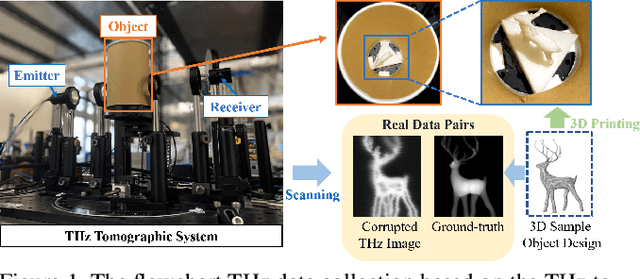
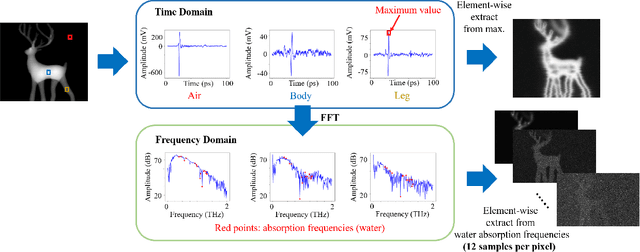
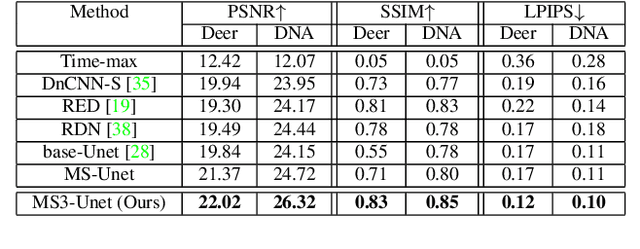
Abstract:Terahertz tomographic imaging has recently arisen significant attention due to its non-invasive, non-destructive, non-ionizing, material-classification, and ultrafast-frame-rate nature for object exploration and inspection. However, its strong water absorption nature and low noise tolerance lead to undesired blurring and distortion of reconstructed terahertz images. Research groups aim to deal with this issue through the use of synthetic data in the training phase, but still, their performances are highly constrained by the diffraction-limited terahertz signals. In this paper, we propose a novel multi-scale spatio-spectral fusion Unet (MS3-Unet) that extracts multi-scale features from the different spectral of terahertz image data for restoration. MS3-Unet utilizes multi-scale branches to extract spatio-spectral features which are then processed by element-wise adaptive filters, and then fused to achieve high-quality terahertz image restoration. Here, we experimentally construct ultra-high-speed terahertz time-domain spectroscopy system covering a broad frequency range from 0.1 THz to 4 THz for building up temporal/spectral/spatial/phase/material terahertz database of hidden 3-D objects. Complementary to a quantitative evaluation, we demonstrate the effectiveness of the proposed MS3-Unet image restoration approach on 3-D terahertz tomographic reconstruction applications.
 Add to Chrome
Add to Chrome Add to Firefox
Add to Firefox Add to Edge
Add to Edge